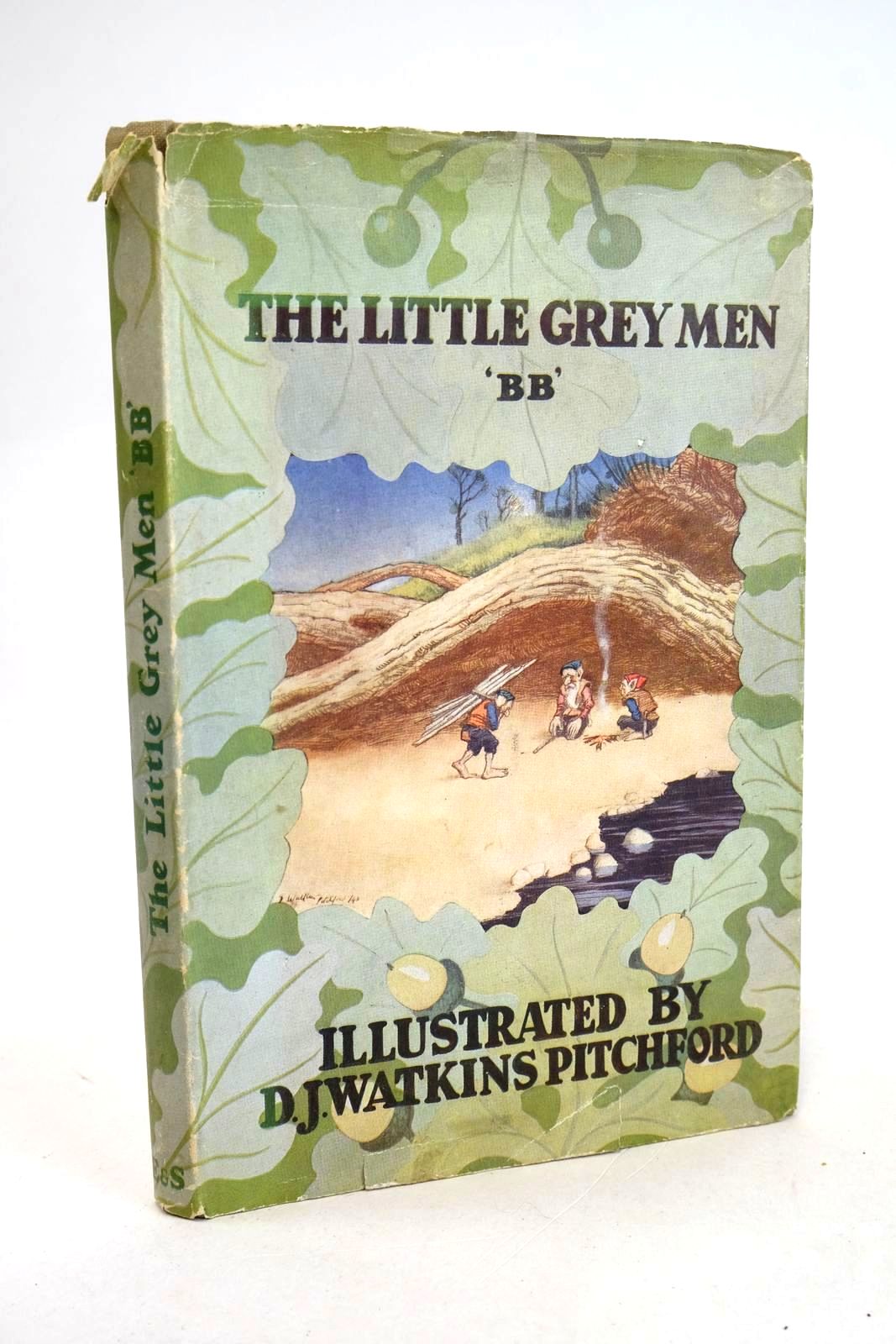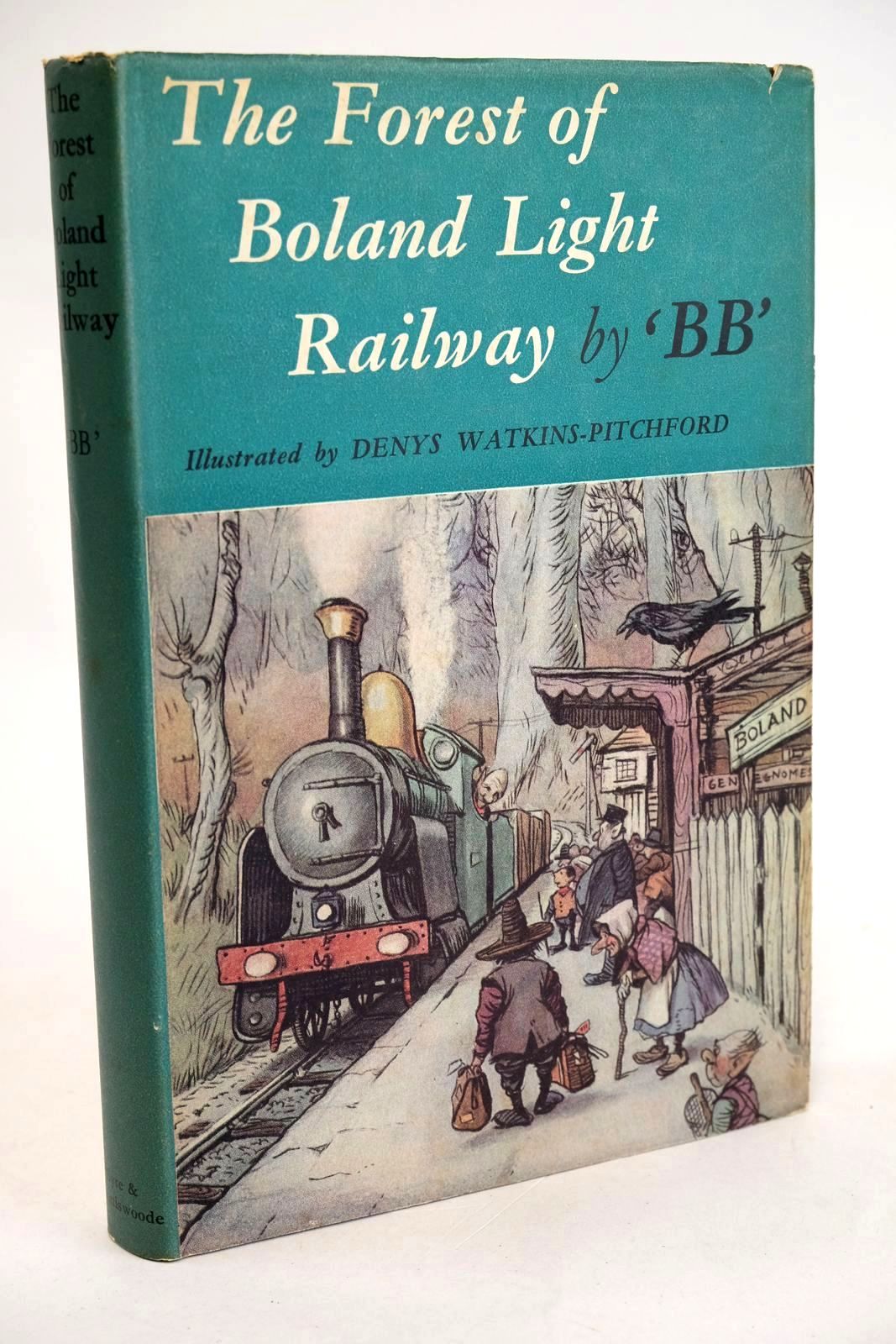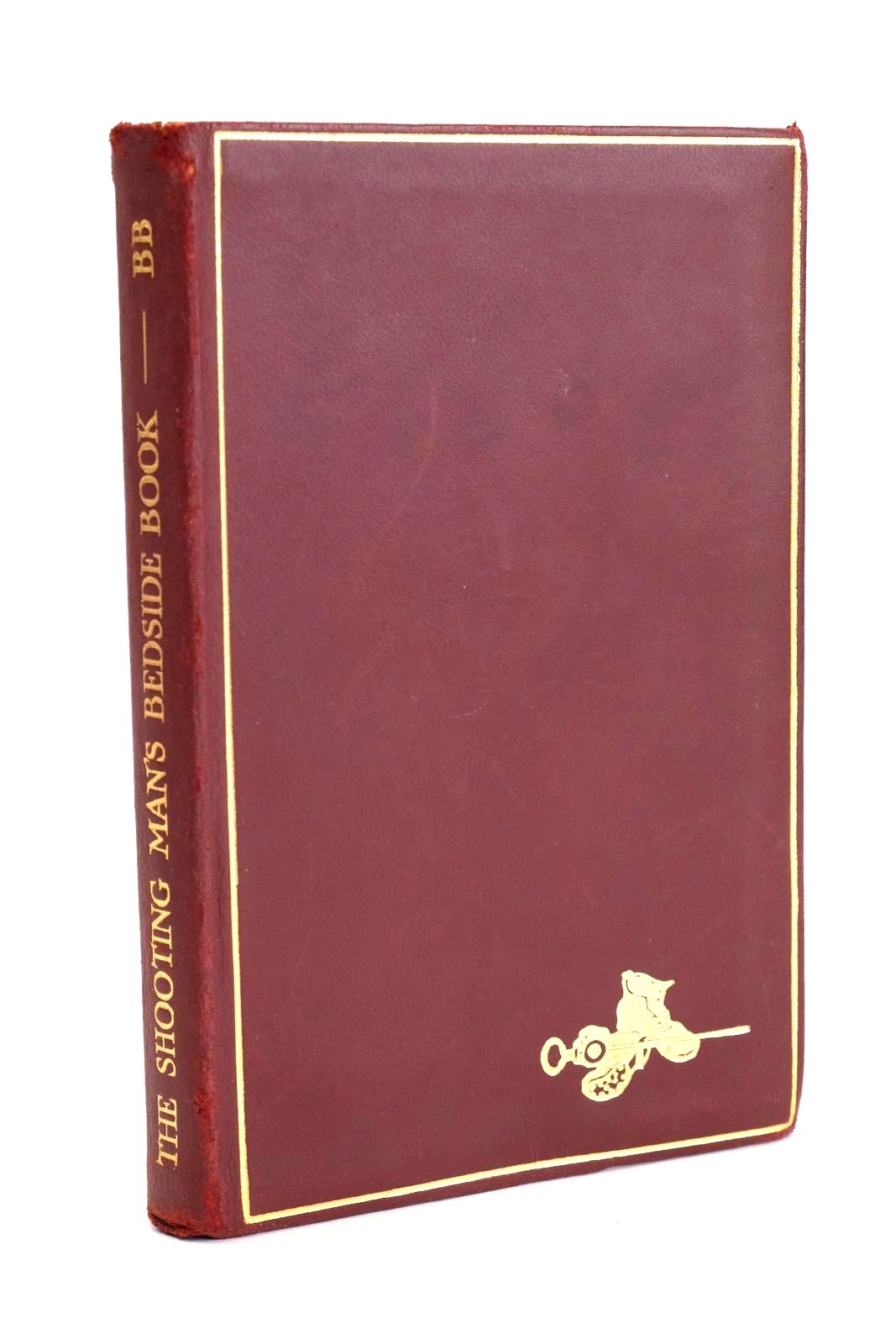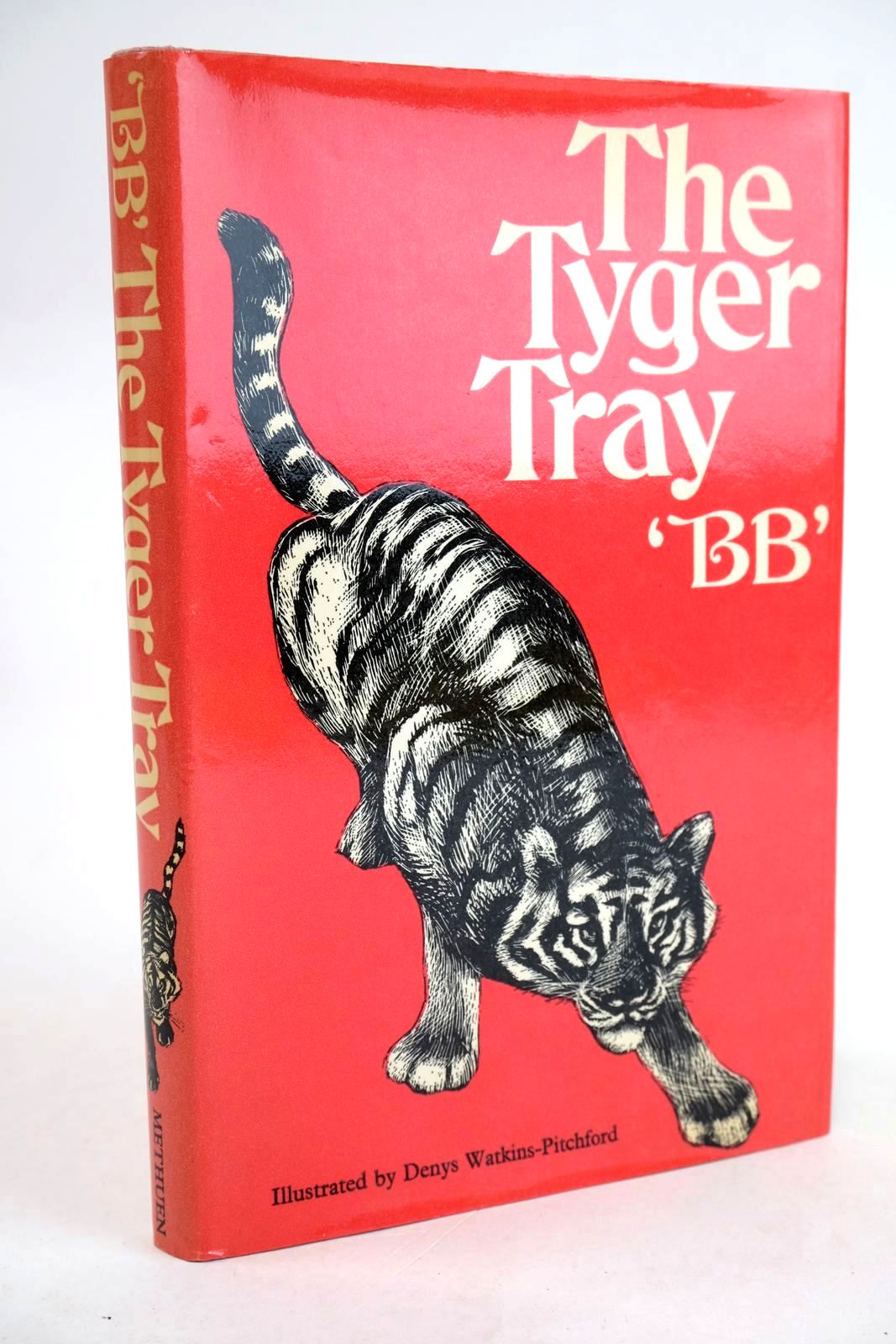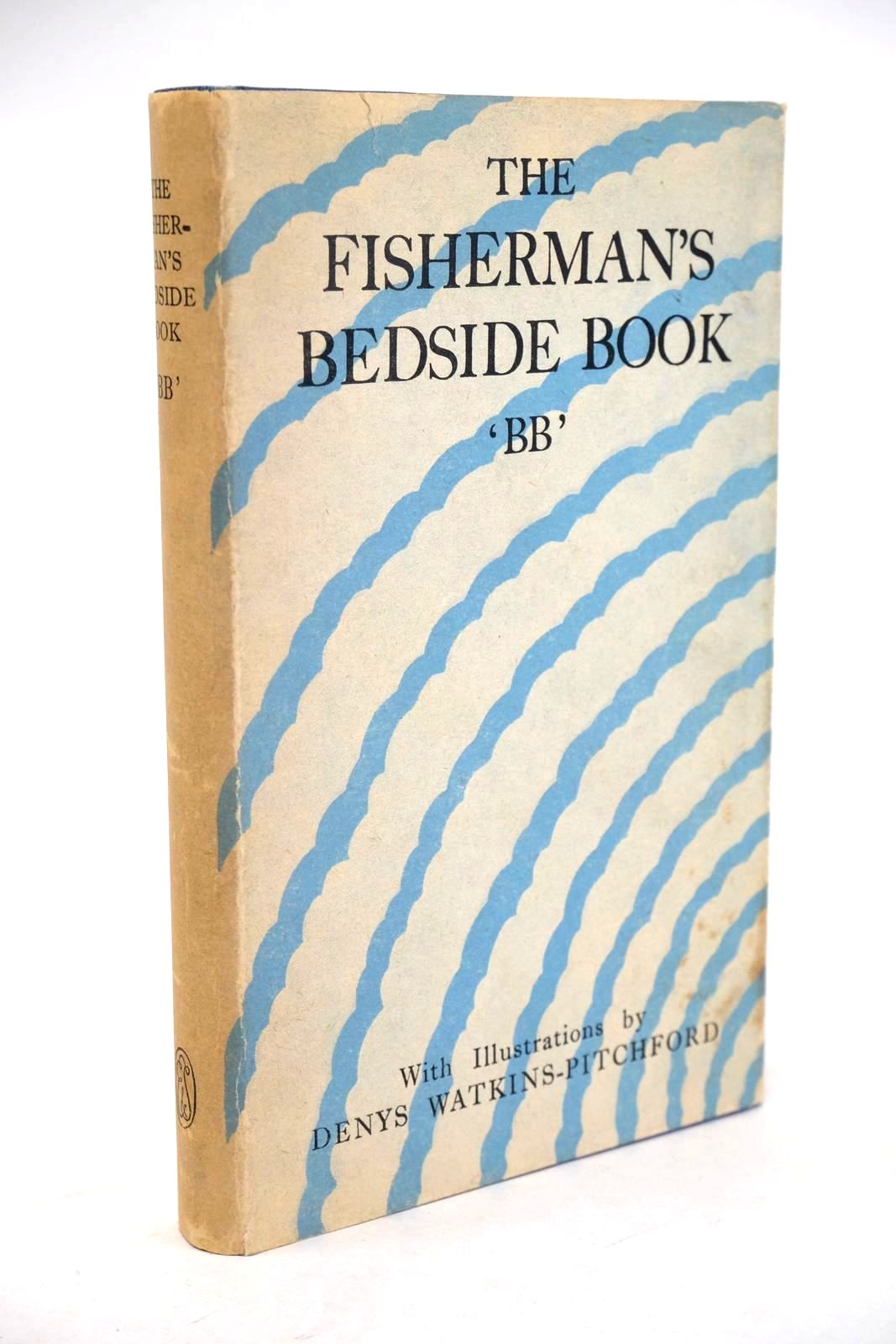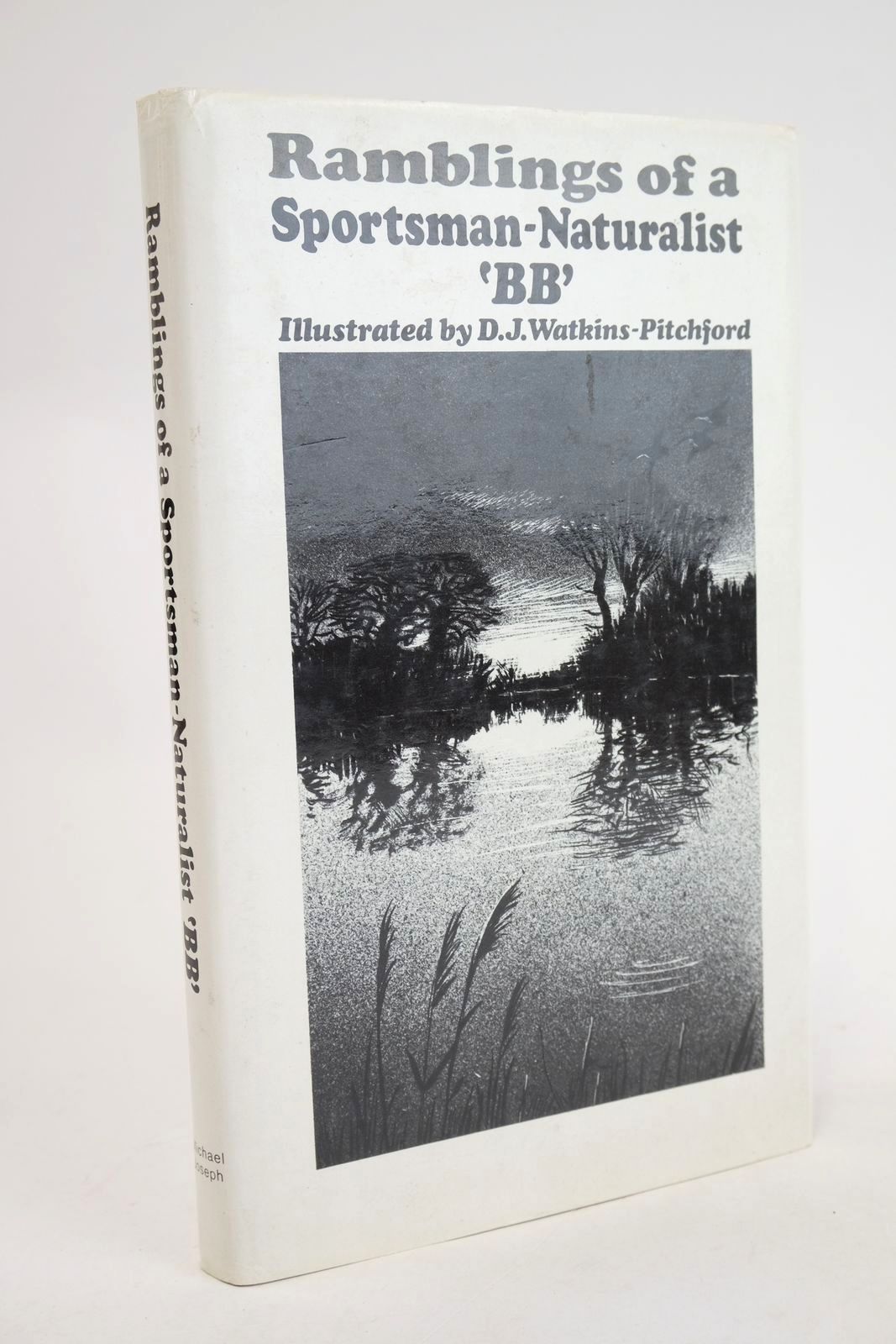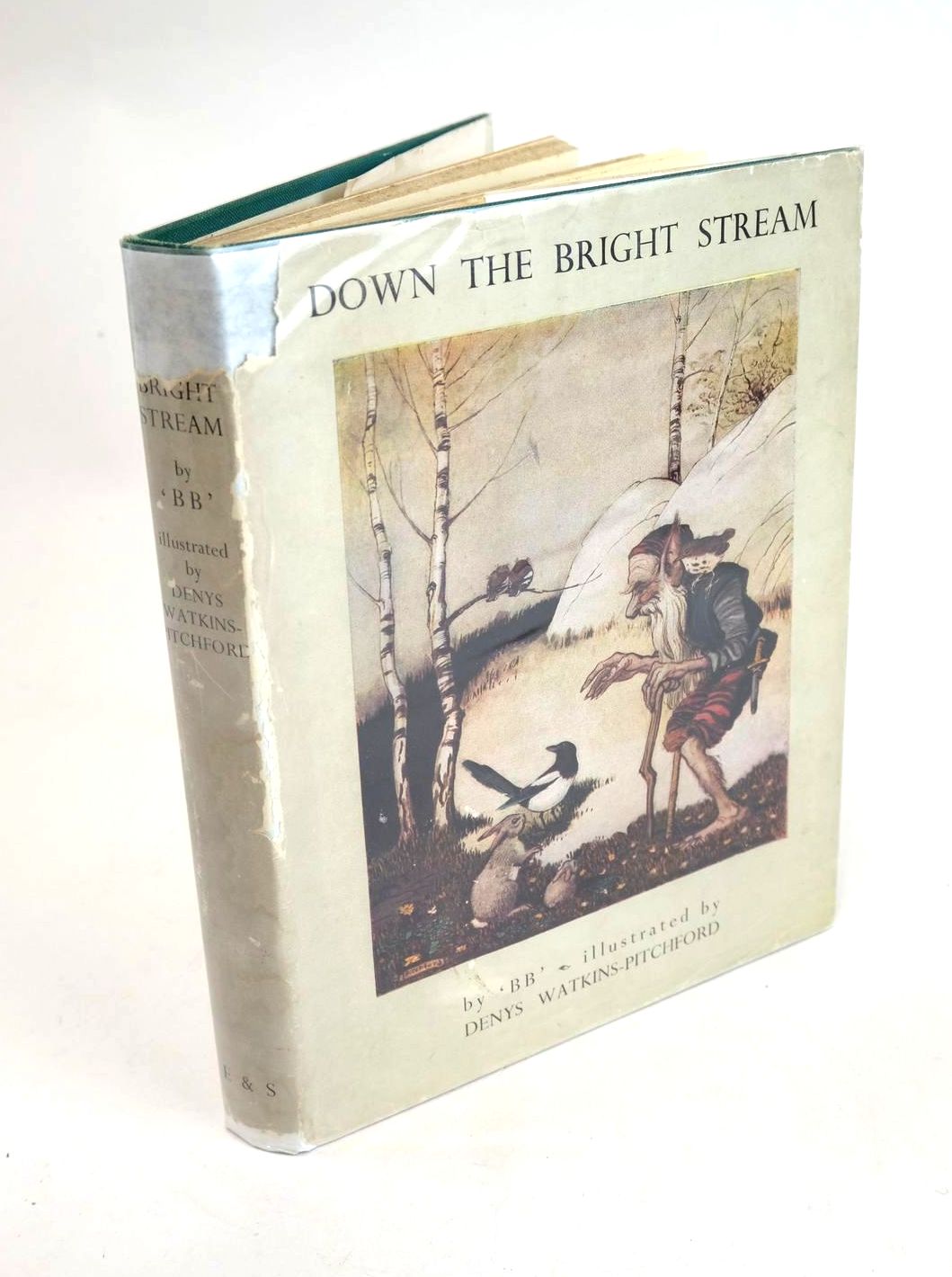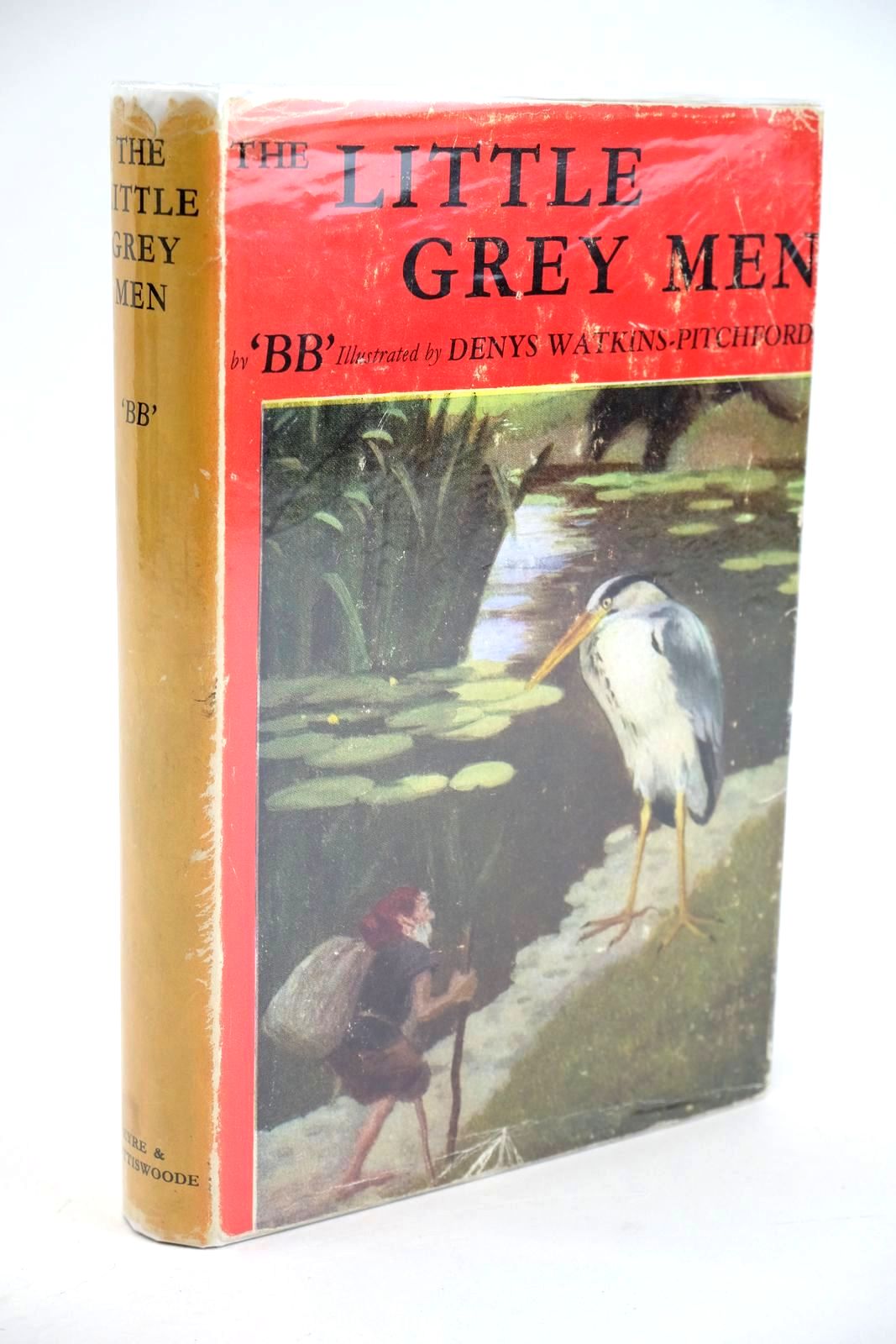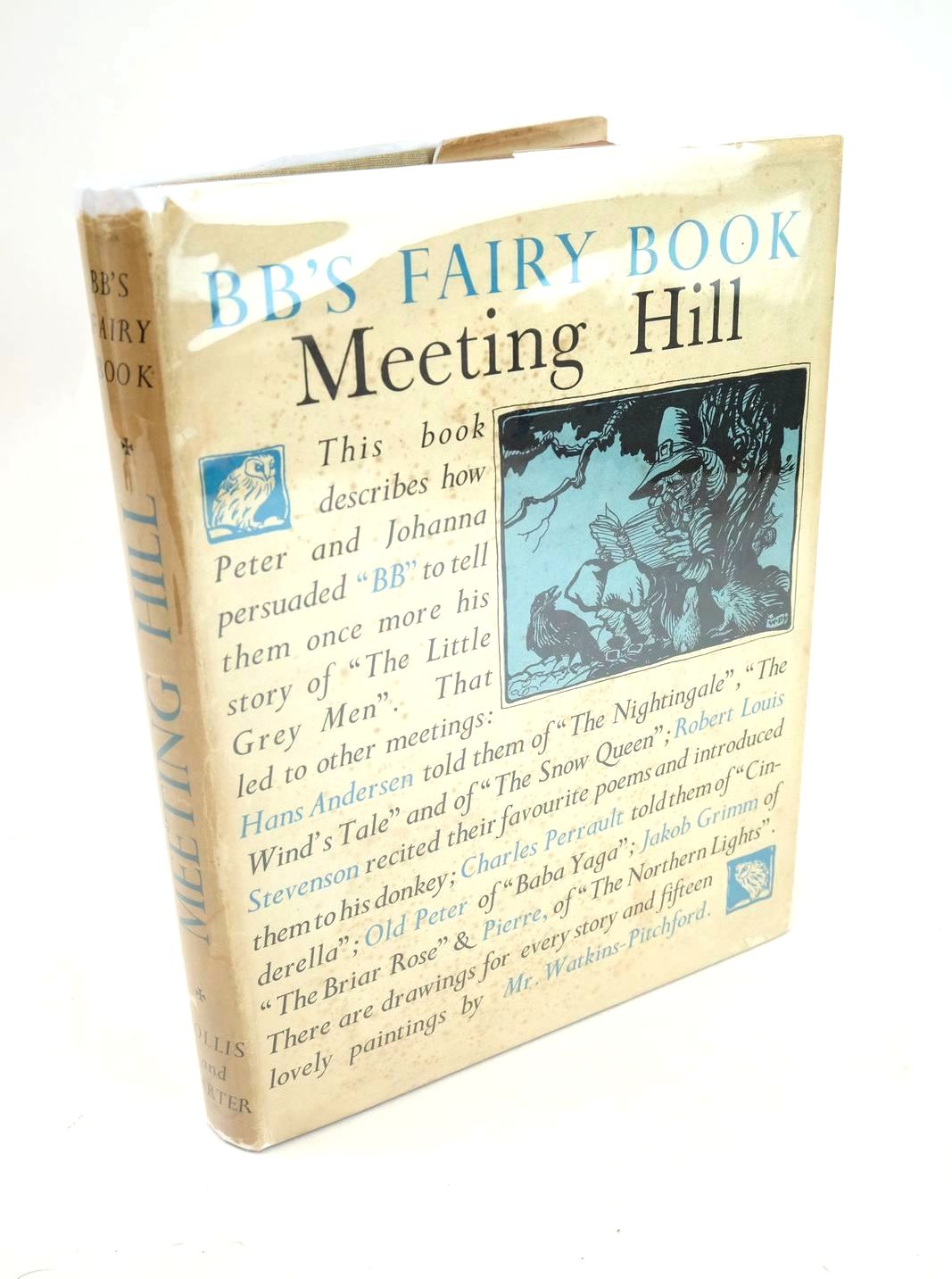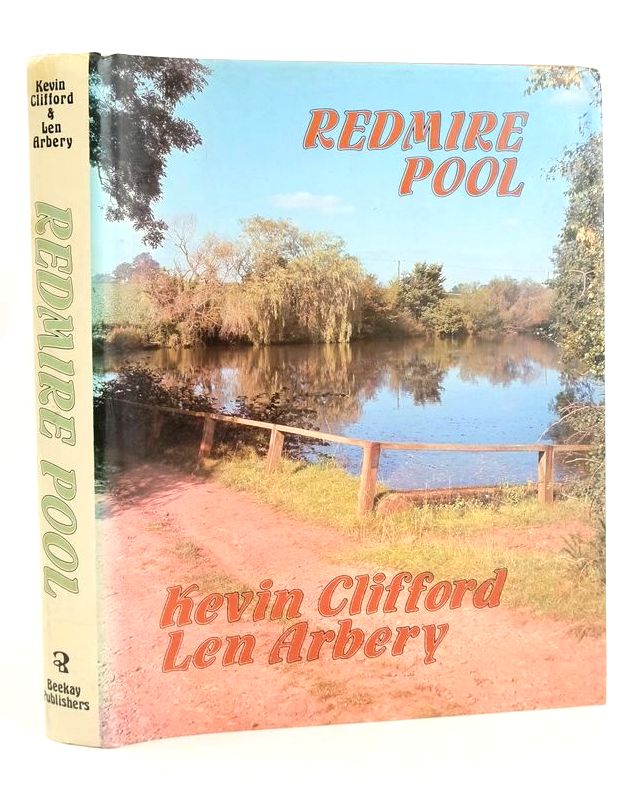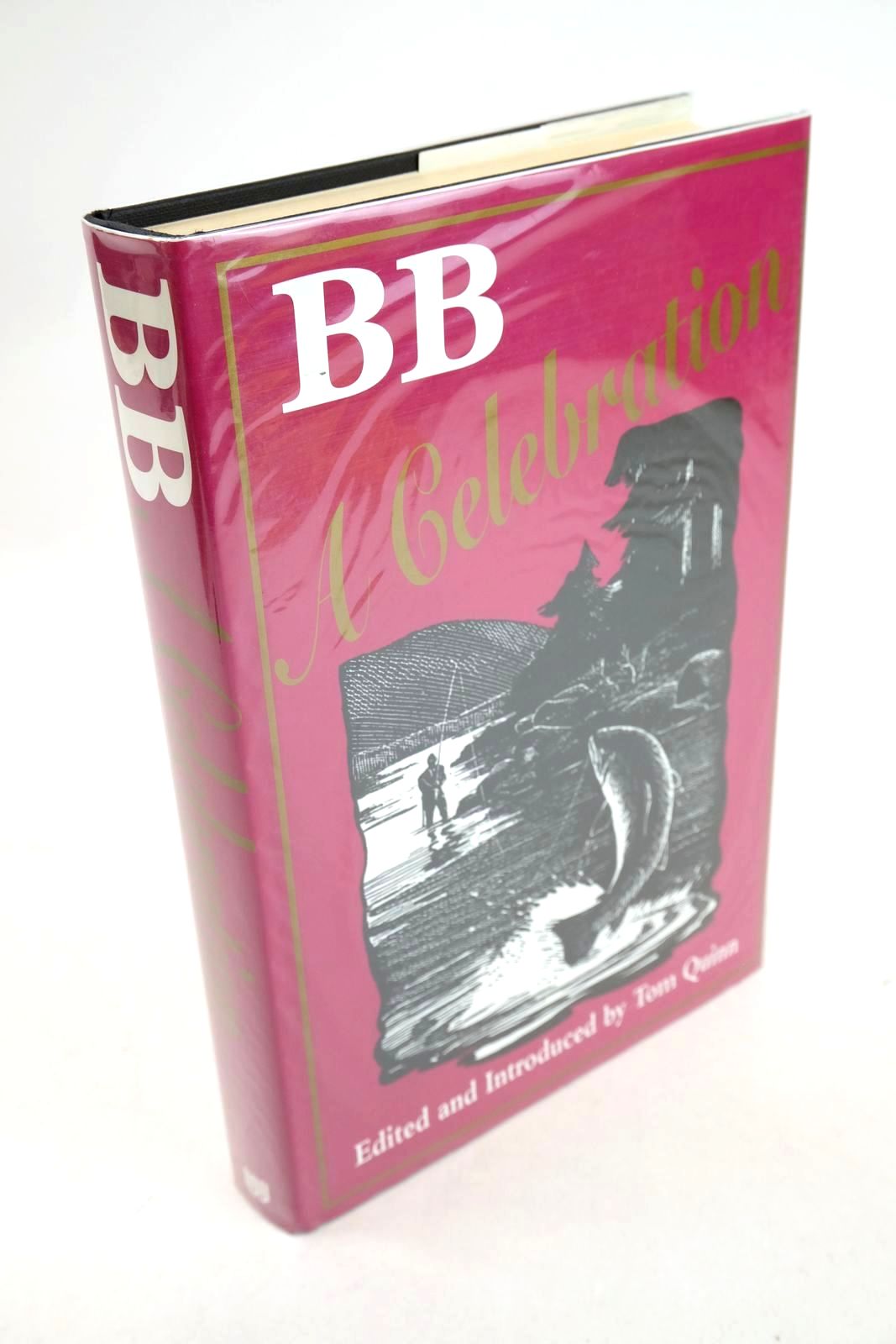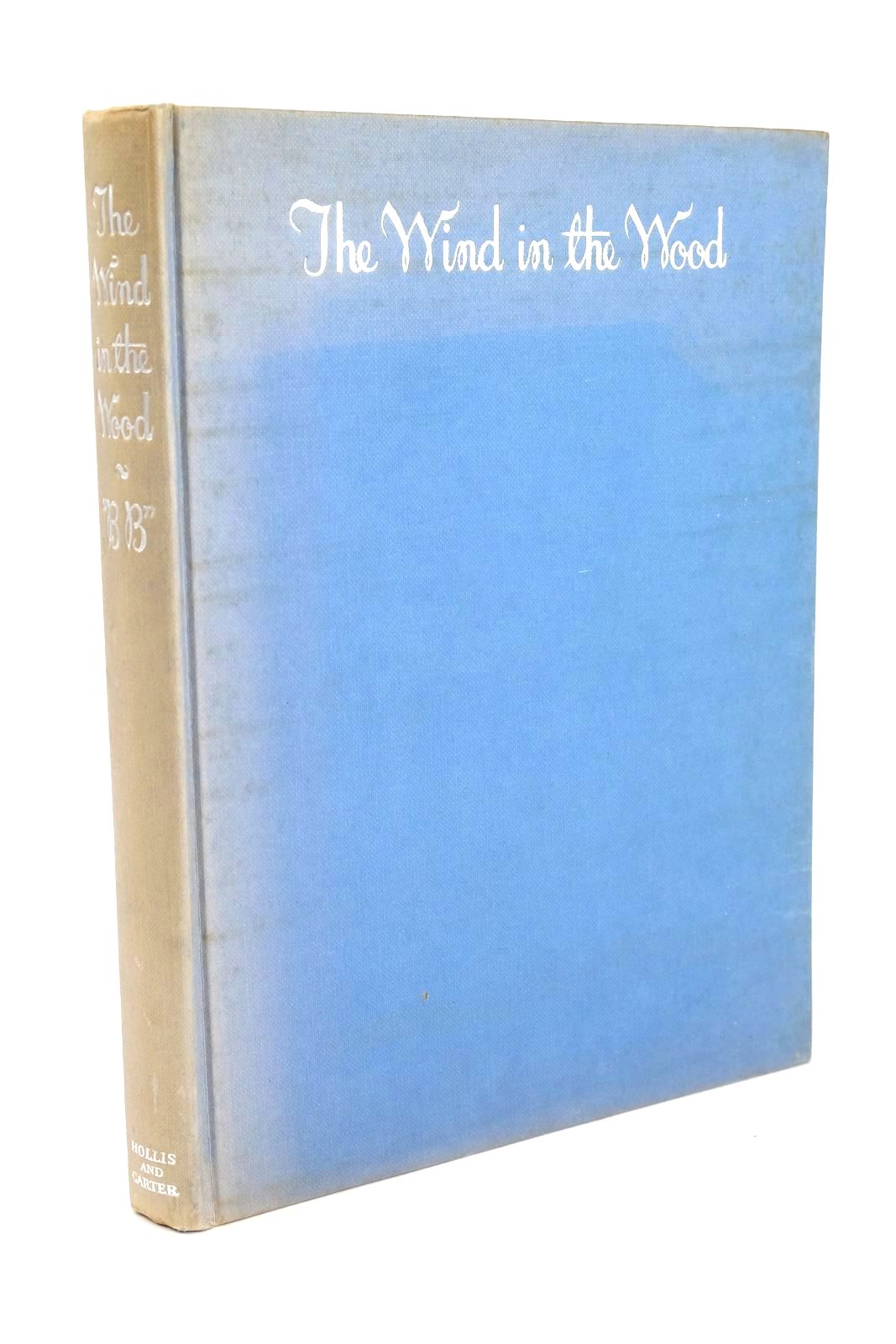Meeting Hill – BB's Fairy Book
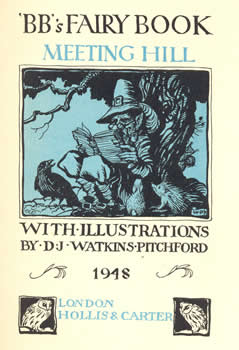 As children, my sister and I spent hours playing in the small steep sided valley, or dingle as we always called it, alongside our house. Our dingle consisted of a few small wooded areas, an old cider apple orchard and a meandering stream. We would spend hours picking wild flowers, playing hide and seek, making dens out of fern, paddling in the stream, making stepping stones across it and catching bullyheads in it. Luckily we very rarely saw anyone in our dingle as I'm not sure how we would have coped with the encounters experienced by the two children in this book.
As children, my sister and I spent hours playing in the small steep sided valley, or dingle as we always called it, alongside our house. Our dingle consisted of a few small wooded areas, an old cider apple orchard and a meandering stream. We would spend hours picking wild flowers, playing hide and seek, making dens out of fern, paddling in the stream, making stepping stones across it and catching bullyheads in it. Luckily we very rarely saw anyone in our dingle as I'm not sure how we would have coped with the encounters experienced by the two children in this book.
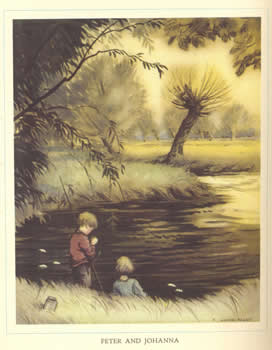 Peter and Johanna are the two children and they were young friends of Denys Watkins-Pitchford who often wrote and illustrated using the pseudonym BB. This book contains some well-known folk and fairy tales told within a story about the adventures of Peter and Johanna. The story begins with the author and the children walking down to the Glydebrook stream near the children's home to look for a kingfisher's nest. Luckily for them the young birds had just left their nest and were sat in a row on a branch awaiting their mother's return with food. After watching the kingfishers for a while they all enjoyed themselves messing about by the stream and relaxing in the warm evening air. Peter asked BB to tell them part of the story he had written some years earlier which was the Little Grey Men, he obliged and this becomes the first story within the story.
Peter and Johanna are the two children and they were young friends of Denys Watkins-Pitchford who often wrote and illustrated using the pseudonym BB. This book contains some well-known folk and fairy tales told within a story about the adventures of Peter and Johanna. The story begins with the author and the children walking down to the Glydebrook stream near the children's home to look for a kingfisher's nest. Luckily for them the young birds had just left their nest and were sat in a row on a branch awaiting their mother's return with food. After watching the kingfishers for a while they all enjoyed themselves messing about by the stream and relaxing in the warm evening air. Peter asked BB to tell them part of the story he had written some years earlier which was the Little Grey Men, he obliged and this becomes the first story within the story.
The children lived in an area surrounded by countryside and close to their house was Meeting Hill, a small woodland surrounded by a thick hedge on top of a high hill. This area was to be the magical place where they met some famous storytellers. Their first encounter was on a day when they had walked to the wood on top of the Meeting Hill to listen for nightingales. To their shock and surprise a curious, unusually dressed gentleman appeared who seemed strangely familiar. He introduced himself as Hans Christian Andersen. Johanna remembered where she had seen him before, it was in a book at home, but her book said he had died many years ago. When she said this to Hans Andersen he replied 'I shall never die, I hope and trust; many people have told me that and I believe them. For as long as there are children to read my books I shall live'. He chatted to them about his life and then, at the children's request, began telling them one of his famous fairy tales – The Nightingale. The next chapter then tells this fairy tale.
The children met Uncle Hans, as he is referred to, twice more during their story and he tells them The Wind's Tale and the story of the Snow Queen but he was not the only famous writer they encountered during their rambles. The man and his donkey that they met on a walk to look for butterflies was the writer and poet Robert Louis Stevenson, he recited a few of his poems for them. On Peter's birthday the children planned to picnic in a boat on a nearby pond. Whilst sheltering out of the rain in the boathouse a finely dressed gentleman in a wig appeared through the bushes, this gentleman was Charles Perrault. His telling of the tale of Cinderella delighted the children. During a family trip to a local forest the children met the Woodcutter from Arthur Ransome's Old Peter's Russian Tales and he told the story of Baba Yaga. Back at Meeting Hill on an autumn day it was the Brothers Grimm and their tale Briar Rose that the children enjoyed. Pierre the Trapper was their final storyteller met on a November day not far from Glydebrook, he recounted an old Indian story called The Northern Lights. The children learned a little about the life of each character before being captivated by the tale they had to tell.
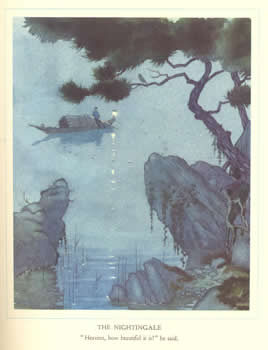
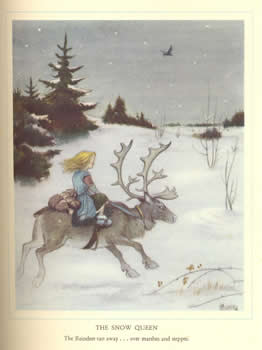
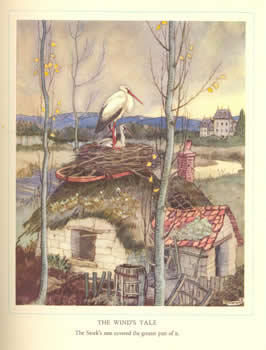
Throughout Peter and Johanna's part of the story the seasons change and the wildlife they see and hear in and around the Glydebrook stream and on the Meeting Hill is described. Denys Wakins-Pitchford is well-known for his books on nature and the countryside and I think that interest is reflected in this book too. His fifteen delightful full-page colour plates complement the tales and their characters beautifully. I particularly like this one from The Wind's Tale. There is also a small black and white chapter header at the start of each fairy tale.
So if you think you would enjoy fairy tales brought together in an enchanting story sprinkled with nature and wildlife and enhanced with charming illustrations this may be the book for you.
View current stock of this book
Contributed by Lorna
(Published on 10th Dec 2014 )


